STEAM Is for Everyone
Ampere educators share success stories from a community engagement experience
Last April, in partnership with Ampere, Whitby’s Colonel J.E. Farewell Public School hosted a family engagement night. The event delivered a variety of engaging activities focused around the STEAM disciplines—Science, Technology, Engineering, Art, and Mathematics. Ampere staff, including Digital Skills Educator Sherisse Richards and Social Media Coordinator Kyle Gordon, attended the event to promote the use of technology as a tool for learning. They brought along with some robotics innovations that captured the attention of parents and students alike.
This is what they had to say about the experience, the impact of their work in delivering information on tech innovation in the classroom, and the future of STEAM education in Canada.
What is a Family Engagement Night?
Sherisse Richards: It’s an opportunity for schools and parents to create an event where STEAM is brought to the forefront for the community. With some support, technology, and facilitators from our Ampere team, we were able to make it a chance for everyone to have fun while learning.
Kyle Gordon: It was an interactive chance for the whole family to get hands-on experience, especially younger children and parents.
What kinds of activities were offered?
SR: We had simple robotics stations alongside more intricate activities, including art stations where kids could draw and Lego stations where they could copy a prototype robot or build a structure. Then, for the little, teeny-tiny tots, we had B-Bots, so they could learn about simple programming and sequences. Older children had the opportunity to learn about Dash and Dots—moveable, programmable robots—and block-based coding.
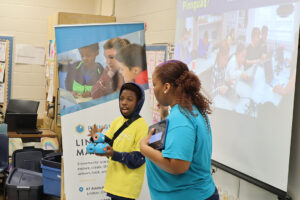
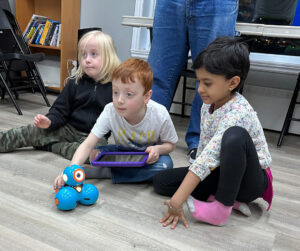
Left: Ampere Digital Skills Educator Sherisse Richards and her son Christian deliver a demonstration. Right: Children at the after-school drop-in STEAM technology skill building program at the Ampere. Courtesy of Ampere.
We also had Binary Beading, an activity where you spell out your name with beads, and our first ever mbot soccer tournament. mBots are little robots that are controlled with apps that let you code games and increase your knowledge of programming skills. In a tournament, each robot is a goalie and you try to get the ball past your opponent. They’re a great way for children to learn about coding while having fun.
Which activity had the biggest reaction?
KG: The mBots are essentially the eye-catcher—it’s the activity that every youth there wanted to go and do, as well as the parents. They’re paired using Bluetooth to an iPad or iPhone, and the kids can control them through the device. The kids would have a go and then instantly get back in the line and try and get another turn.
How do you think students and parents feel about implementing robotics into education?
SR: I’ve seen many parents who are excited, but there’s a flip side. Sometimes, people are averse to new things. We have to remind them that there’s nothing to fear but fear itself. If you learn how to utilize technology, then you become more comfortable with it. We’re here to support children as young as two or three, as well as seniors and everyone in between, to embrace that scary feeling and overcome it. That’s what’s so wonderful about hands-on learning—you really get a chance to feel the equipment and utilize it yourself, and I think that makes a difference. Learning while having fun is a transformational experience.
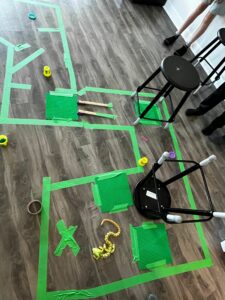
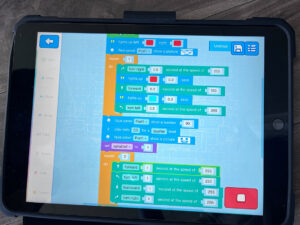
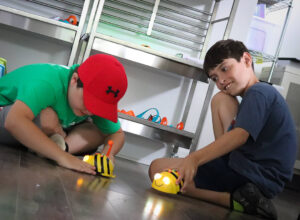
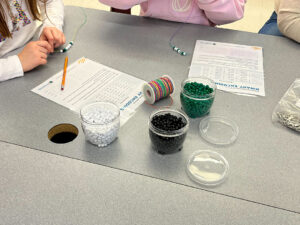

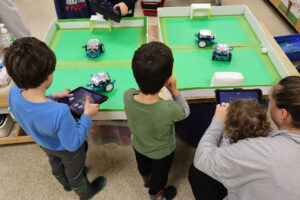
Participants playing with different learning tools, like Bee-bot robots and mBots, through different interactive activities, like an mBot soccer. Courtesy of Ampere.
KG: The parents were very open-minded and excited about adding robotics into the curriculum and education, but they were also uncertain about how that could be achieved, wondering how to get the robots and how they can help teach something they don’t fully understand themselves. That’s a gap that we can bridge with educators in the field.
Why is it important for parents or guardians to engage the same way educators do?
SR: Oftentimes, we want to look to educators and ask, “What can they do for our children?” but truly, parents or guardians are the first educators in a child’s life—learning really starts at home. So it’s very important for them to be engaged because children learn not only from what we say, but what they see modelled in front of them. It’s a great opportunity not only for children to learn but also for bonding to take place. It’s amazing to see what some of these little ones, teens, and parents create.
What do you think the future holds for robotics or more tech in classroom settings? What do you hope to see?
SR: I often think about this as a parent and an educator. The environment of learning has changed with virtual and hybrid learning opportunities and robotics and tech integration has become so much more prevalent since the pandemic. Now we’re seeing smart classrooms, where virtual reality headsets or augmented reality are embedded within the learning experiences. I think technology is only going to become more and more prevalent, especially in rural or remote areas. I think we just have to embrace technology.
KG: I love seeing the light bulbs go off when one of the learners or parents has discovered something new. When I was small, I didn’t have access to STEAM education the way youth nowadays do, so I want to try and provide that, whether it’s through robotics, music, or art. What I’d hope to see is more coding in the classrooms and a little more engineering, just to get that hands-on experience.
If you are interested in bringing a Family Engagement Night to your community, visit the Ampere website to learn more, or reach out to us via email.
This conversation has been edited and condensed for space and clarity.
